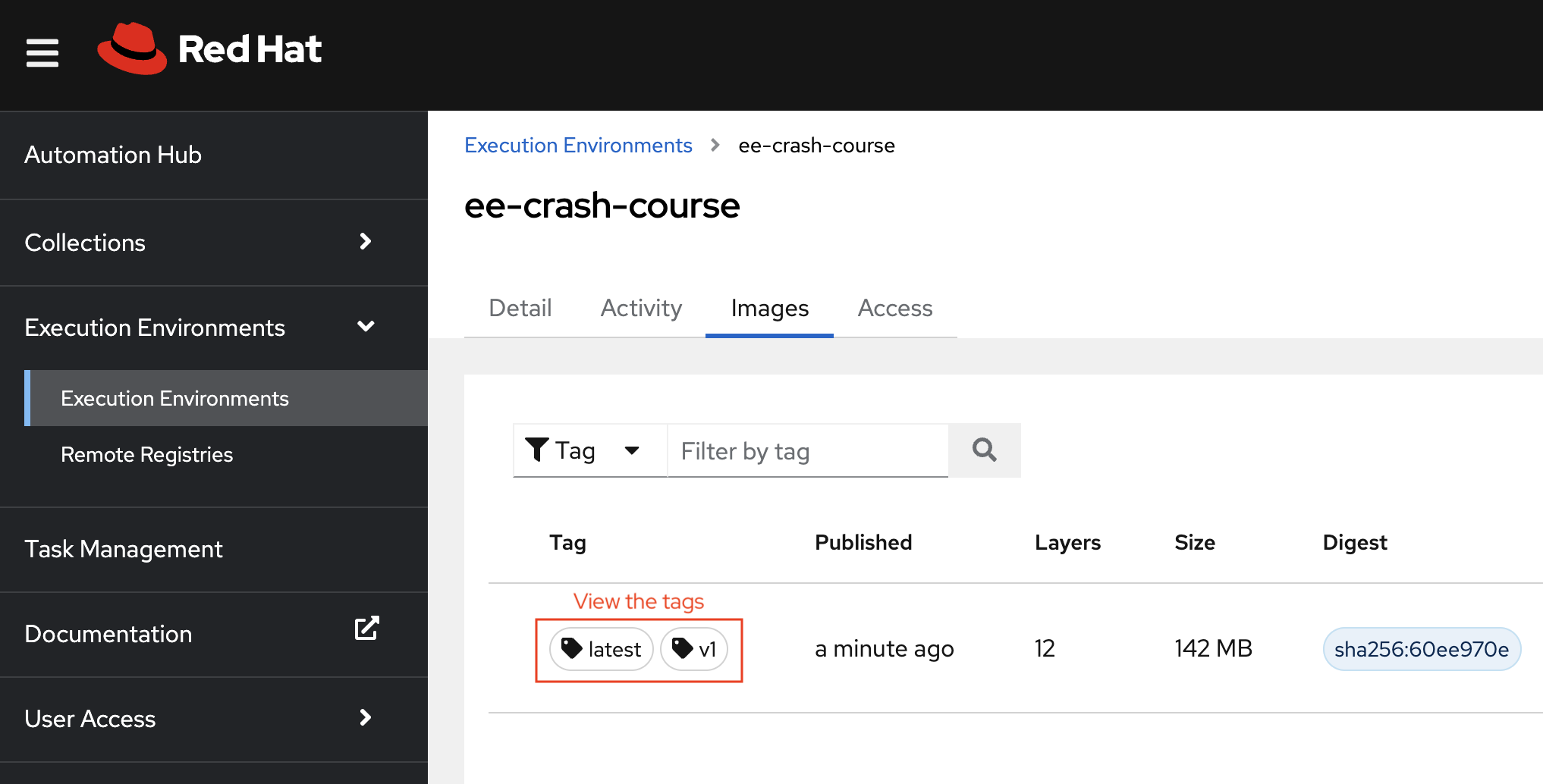Part 2: Create an EE 
ansible-builder
After completing Part 1, your working directory should look like this:
.
├── execution-environment.yml
└── files
└── ansible.cfg
1 directory, 2 files
If you copy and pasted the example ansible.cfg, then make sure to replace the tokenized variables. The sed commands below will do the trick:
sed -i 's/<PRIVATE_AUTOMATION_HUB_HOST>/hub.company.net/g' files/ansible.cfg
sed -i 's/<PRIVATE_AUTOMATION_HUB_TOKEN>/12345token7890/g' files/ansible.cfg
To pull the base image, you will need to authenticate to registry.redhat.io with your RedHat account:
podman login registry.redhat.io
Now let's run ansible-builder:
ansible-builder build --tag ee-crash-course:latest --tag ee-crash-course:v1
Push to Automation Hub Registry
Once builder is complete, we should have a fully-functional execution environment image on our build host:
# podman images
REPOSITORY TAG IMAGE ID CREATED SIZE
localhost/ee-crash-course latest ab30c565ad49 52 seconds ago 430 MB
localhost/ee-crash-course v1 ab30c565ad49 52 seconds ago 430 MB
...
Remember, we applied two tags so there are two entries, but there is only one image (check the hash). Now lets push them to our Private Automation Hub:
PRIVATE_AUTOMATION_HUB_HOST="hub.company.net"
podman tag localhost/ee-crash-course:v1 $PRIVATE_AUTOMATION_HUB_HOST/ee-crash-course:v1
podman tag localhost/ee-crash-course:latest $PRIVATE_AUTOMATION_HUB_HOST/ee-crash-course:latest
podman login $PRIVATE_AUTOMATION_HUB_HOST
podman push $PRIVATE_AUTOMATION_HUB_HOST/ee-crash-course:v1
podman push $PRIVATE_AUTOMATION_HUB_HOST/ee-crash-course:latest
Navigate to the Execution Environment in your Private Automation Hub:

Create Reference in Controller
Almost there - we need to create the Execution Environment resource in our Controller instance which points to the image hosted in our Private Automation Hub container registry.
In your Controller instance, navigate to Administration > Execution Environments and click Add.

| Input | Value |
|---|---|
| Name | Use a consistent naming convention - I like ee-<purpose> |
| Image | The image name and tag you pushed to Private Automation Hub. In this example, the value would be hub.company.net/ee-crash-course:v1. I do not recommend using latest - specifying the version tag is more explicit and will ensure you have an up-to-date image on your execution nodes for running jobs. |
| Pull | I almost exclusively use Only pull the image if not present before running.. This option has some weird behavior if you use the latest tag. Specify a version 🙂 |
| Description | Something meaningful |
| Organization | [Optional] to limit availability of the Execution Environment |
| Registry Credential | Select your Automation Hub Container Registry Credential |
Celebrate 🥳
Congrats, you have successfully built your first Execution Environment! If you used the provided definition file, then you might be wondering what all you can do with an EE that only has the ansible.controller collection.
The short answer, not much - let's move on to Part 3 and curate a purpose driven Execution Environment.